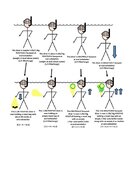The Optimal Buoyancy Computer
A tool to help nail buoyancy and improve safety, before you splash
1) How much lead should I carry with my new wetsuit?A tool to help nail buoyancy and improve safety, before you splash
2) How big a wing should I buy?
3) Will my BCD support my lead, both at the surface and when my wetsuit is compressed at depth?
4) Will my BCD support my rig without the help of my wetsuit/drysuit, if I doff it at the surface in an emergency, or underwater due to an entanglement?
5) How do I balance my rig?
6) How might partial weight ditching help me deal with an emergency? Will it really result in a runaway ascent?
7) How does the neutral buoyancy check change with thick neoprene?
I’m excited to announce the release of the Optimal Buoyancy Computer.
Designed to answer a variety of buoyancy questions, it provides accuracy directly proportional to the precision of your data input. Starting with as little as your height, weight and suit thickness, you can get ballpark weight requirements quickly. With additional information, you can compare equipment configurations, and plan for self-rescue after hypothetical equipment failures.
This tool is an Excel spreadsheet, and is a revision of a tool originally released in Buoyancy, Balanced Rigs, Failures and Ditching – a comprehensive tool , which was itself a revision of a toy spreadsheet first introduced in this thread: Advice on lift capacity for BP&W in April, 2018. After months of user suggestions, this new tool uses a simpler, modified data input system, and produces both simple and complex analyses of buoyancy. It works in both metric and Imperial units, salt and fresh water, and with both U.S. and European tanks.
Included is a 50-page user’s manual to lead you through the more complex parts of the tool, and a Quick Start section to get you going with minimal familiarity with spreadsheets. Additionally, the manual discusses the theory behind the more complex buoyancy calculations, whether you need help with Excel or not. If you are not facile with Microsoft Excel, the manual will take you through it all, step by step.
Here's the Table of Contents:
Many thanks to @stepfen , @johndiver999 , @kmarks , @Akimbo and the many others who have made suggestions and comments along the way.
NOTE:
As each new version is uploaded, the count of downloads returns to zero. We are currently at over 2000 downloads of the tool, counting repeat customers! Thank you for your interest!
WARNING: These spreadsheets are experimental tools using formulas created by amateur divers for educational use only. Numerous assumptions regarding buoyancy have been made based upon only partially tested equipment configurations. The information herein is for your personal educational use and should not be relied upon to determine the adequacy of a given equipment configuration. Consultation with a dive professional regarding equipment, weighting and performing a neutral buoyancy check should all be strongly considered before diving a new equipment configuration. Note specifically that the practice of ditching weight at depth is a controversial one, and the theoretical data in this spreadsheet should not be considered a recommendation of that practice.
Selected for the ScubaBoard Knowledge Base.




